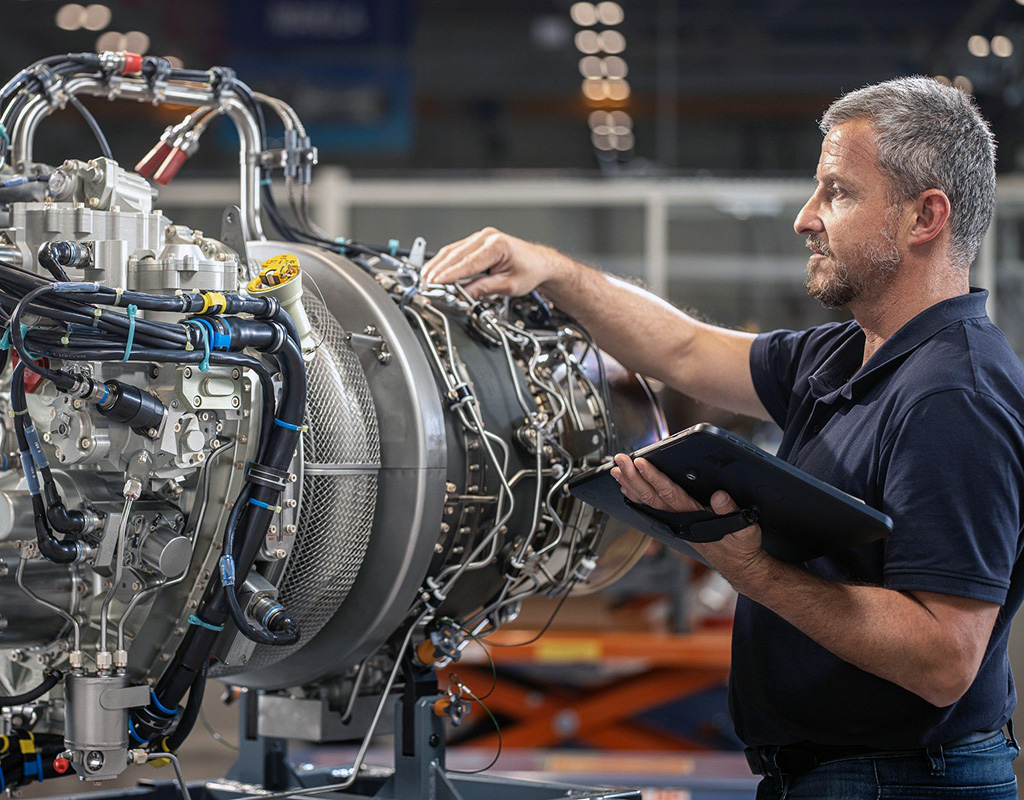
Safran Helicopter Engines says the current helicopter market is booming, but that a “supply chain crisis” means that its biggest challenge in 2023 will be ramping up to meet this demand for increased production, service and support.
“The helicopter market currently is absolutely superb,” Franck Saudo, the company’s CEO, told reporters during a media briefing ahead of the manufacturer’s participation at HAI Heli-Expo 2023 in Atlanta, Georgia. “It’s probably the best market I have seen for close to the past 10 years. And what is particular at the moment is there is great market momentum, both on the new helicopter market front and on the aftermarket for helicopter engines.”
He said Safran was seeing positive momentum in “next to all” market segments and geographical areas, and was noting the “beginning of a rebound” in the oil-and-gas market.
On the aftermarket side, Safran has reported an increased demand for work driven by flight hours that have returned to 2019 levels, while the company said “robust and sustained” demand for new aircraft in 2022 took sales above those of 2019.
This growth in activity, however, is taking place in the context of a very constrained supply chain, said Saudo, adding that the biggest challenge the company faces in 2023 will be to ramp up and keep up with demand in the current environment.
“We face challenges with the supply of materials and also with suppliers that are in a situation of undercapacity, mainly due to labor shortages,” he said. “It is our number one responsibility at Safran helicopter engines to protect our customers — be they helicopter manufacturers or helicopter operators — from this supply chain crisis.”
He said the company had begun investing and vertically integrating in 2020 to alleviate supply chain bottlenecks and increase capacity. To meet the ramp up required by the market activity, Safran hired 400 people worldwide in 2022, and plans to hire another 200 this year.
Saudo said the company’s investment in developing and certifying four new engine types in 2019 — the 1,300 horsepower Arrano, the 2,500 to 3,000 horsepower Aneto, and two versions of the 1,400 to 2,000 horsepower Ardiden (1U and WZ16) — means Safran is able to fully benefit from the current positive market momentum.
The Arrano powers the new medium-lift Airbus H160, entering service with the type in December 2021. The H160 has now recorded over 1,000 flight hours and is operating in three different continents with five or six different customers (according to Airbus). Saudo said more than 100 H160s are now on order from military and civil customers.
The Aneto 1K powers the Leonardo AW189 K, promising 25 percent more power for Leonardo’s super medium. The type was certified with the engine back in 2020, and while Gulf Helicopters had been announced as its launch customer that year, the purchase was put on hold after the pandemic struck.
A recovery in the super medium segment has led to a new launch customer, said Saudo.

The Aneto has also been proposed for Leonardo’s AW149 submission for the U.K.’s New Medium Helicopter tender. “It brings for this tender superior performance for demanding military missions,” said Saudo.
During Heli-Expo, Safran will celebrate the Arriel reaching 60 million flight hours. The engine was recently announced as the new choice to power Leonardo’s upcoming AW09 light single helicopter, replacing the Honeywell HTS900.
Safran has also worked with Airbus Helicopters to create an innovative powerplant for the DisruptiveLab demonstrator, and recently announced an agreement with HAL to jointly develop a new engine for the upcoming Indian Multirole Helicopter.
Saudo said the company is committed to decarbonization, with a target of certifying all its engines to accommodate up to 100 percent sustainable aviation fuel (SAF). Safran recently partnered with Bell to help a Bell 505 fly with 100 percent SAF in a landmark flight.
Saudo referenced the “chicken-and-egg” problem of high cost and low demand limiting the widespread adoption of SAF.
“Governmental policies and the impulsion action of non-governmental players will be key, so that we get out of this chicken-and-egg problem,” he said. “If there is more demand, the cost of SAF will decrease, and as the cost of SAF decreases, demand will increase.”
Hybrid electric technology will also be part of the decarbonization roadmap. An “Eco Mode” system, to be tested in the Airbus Racer high speed compound demonstrator aircraft, will allow a twin-engine helicopter to put one engine in idle during cruise flight. This offers a potential 20 percent reduction in fuel consumption, said Saudo.
“There are plans to make it a market standard,” he added. “Now it starts with this [Racer] demonstrator.”

